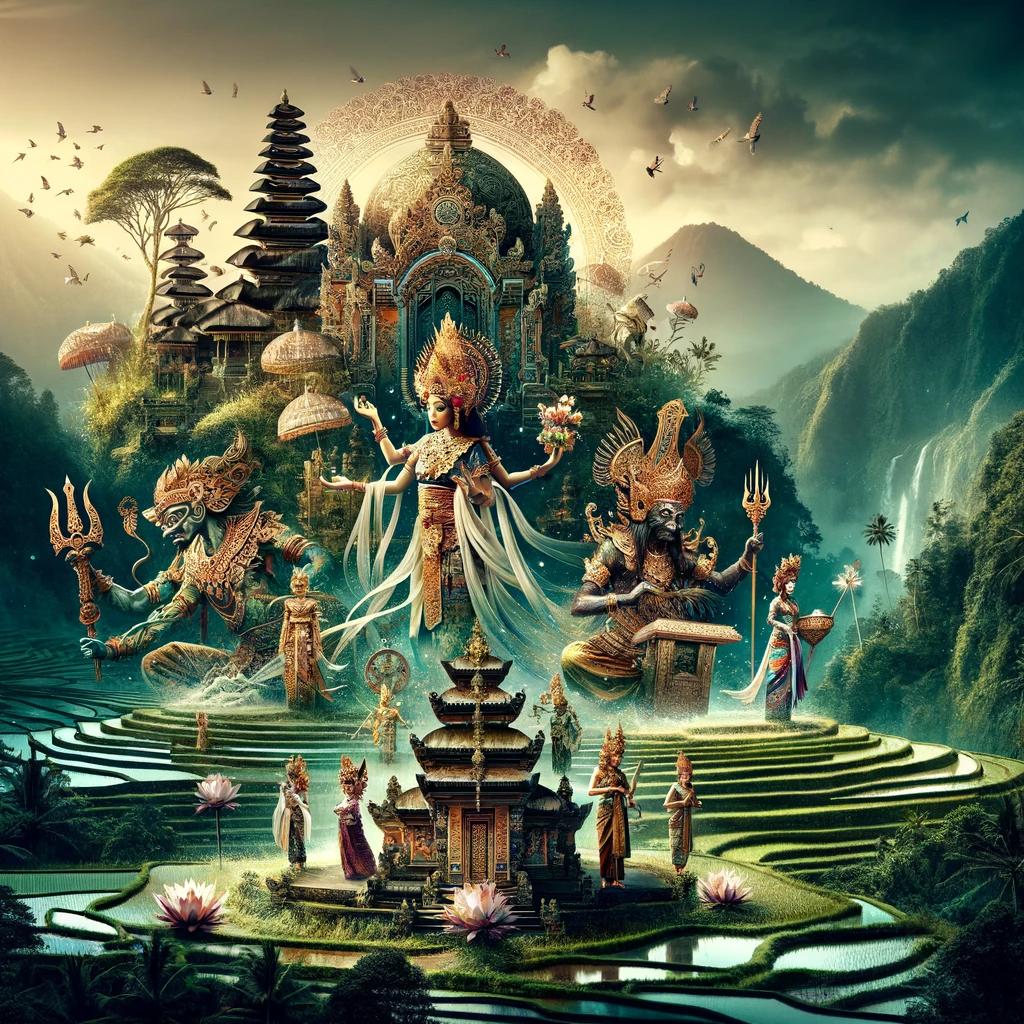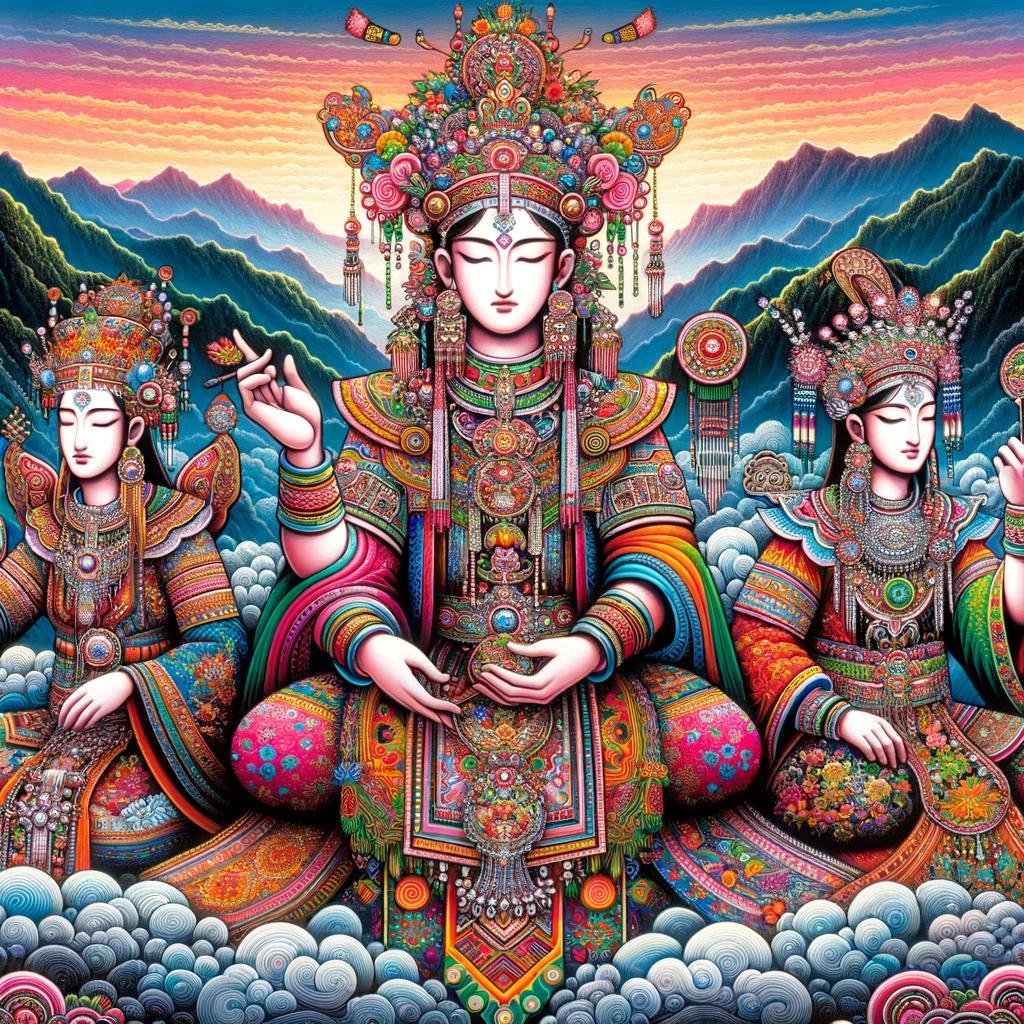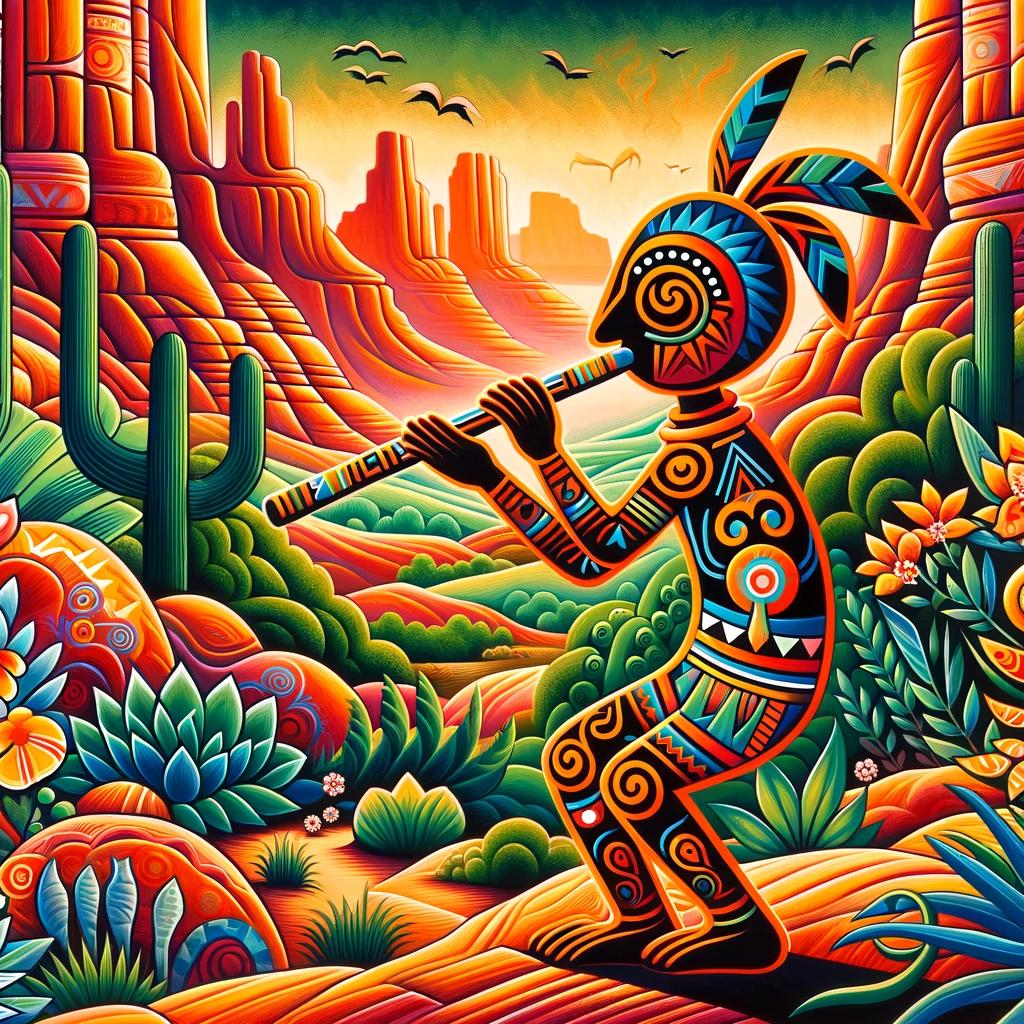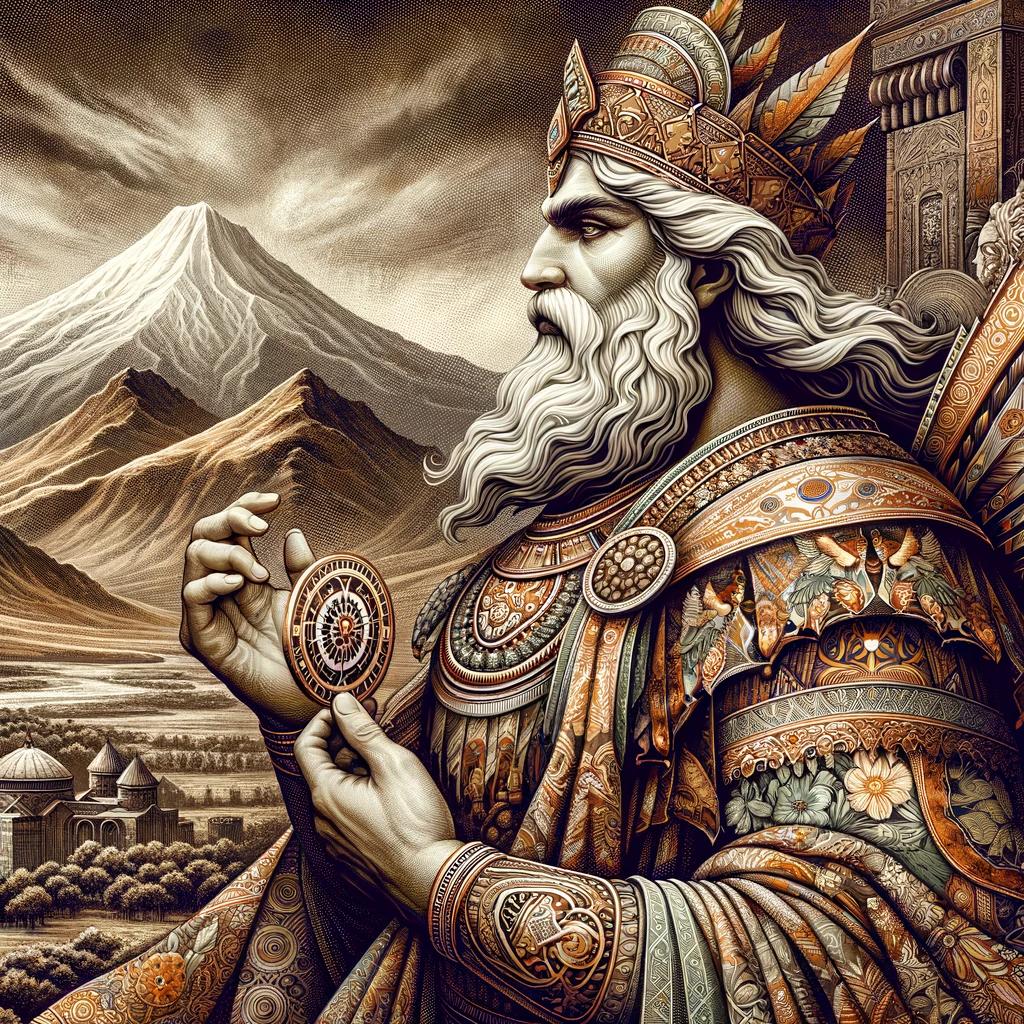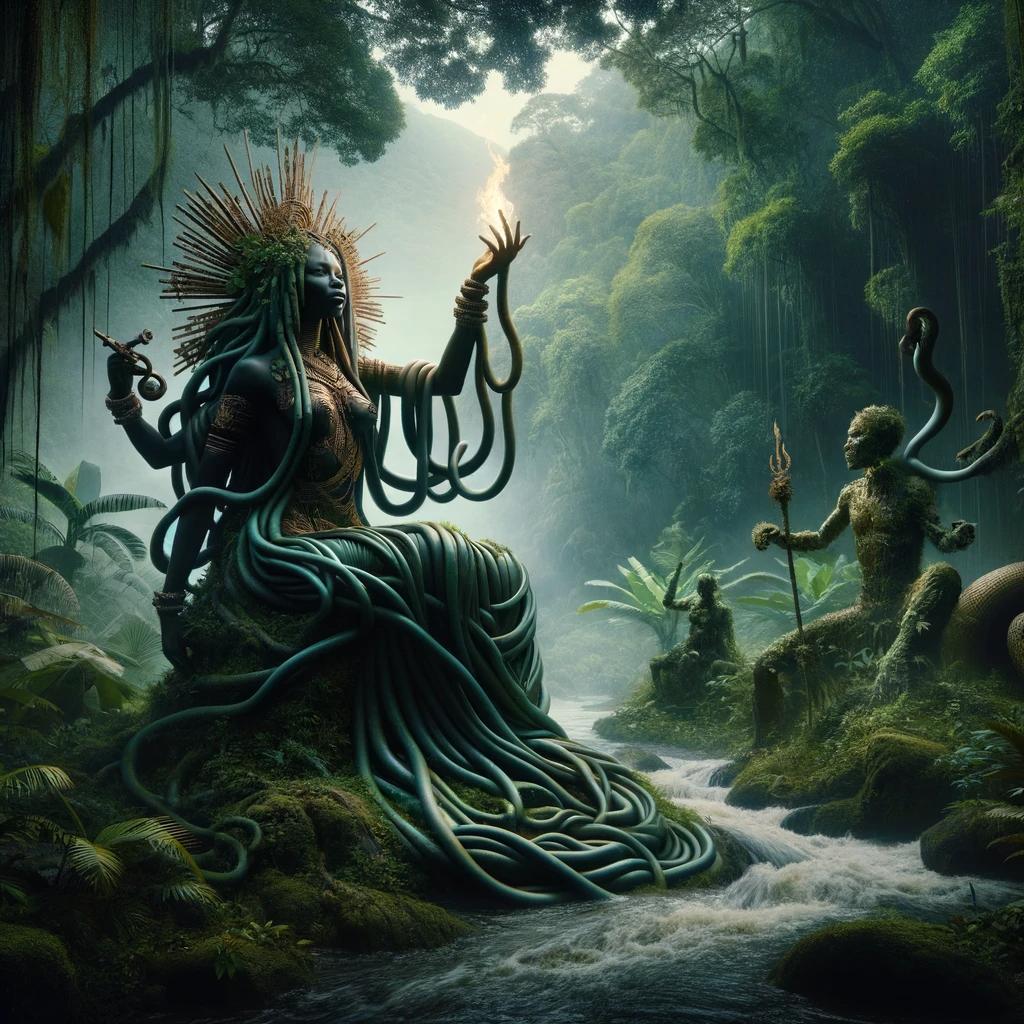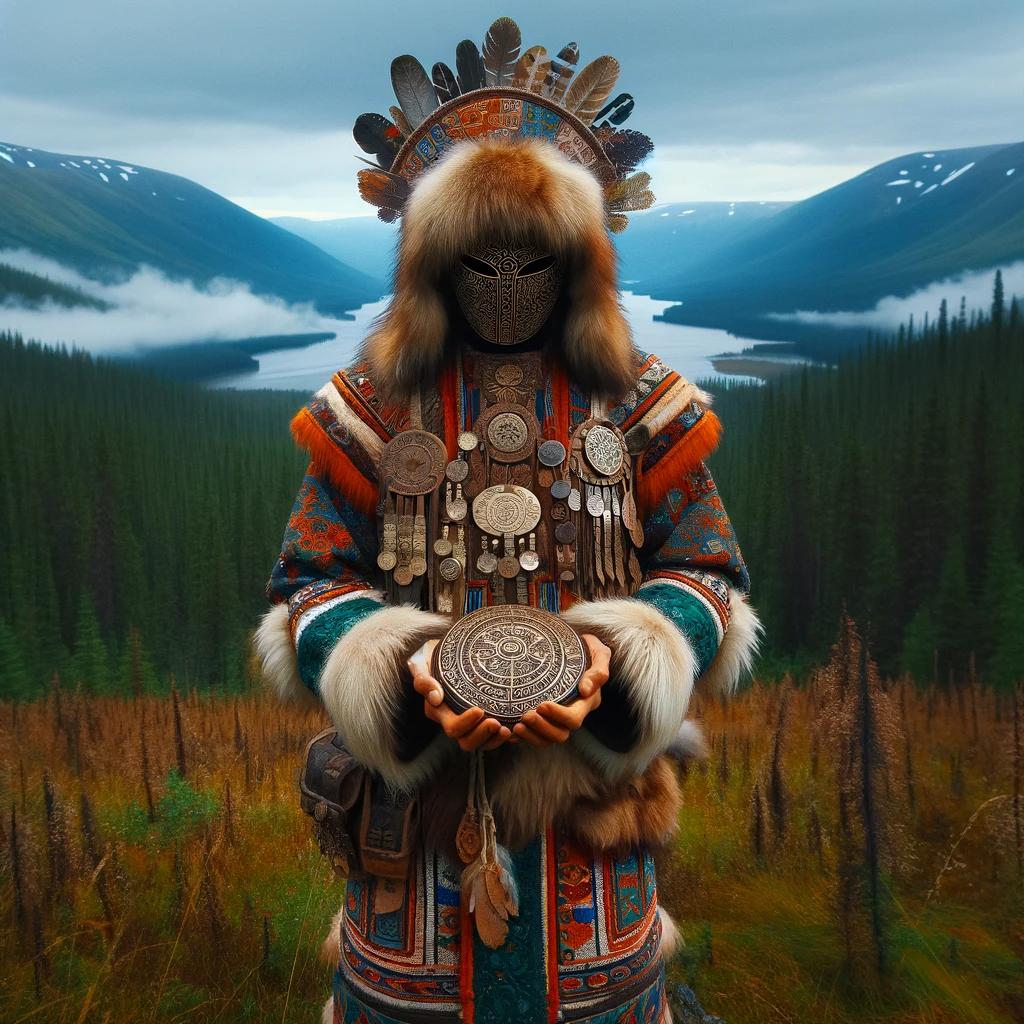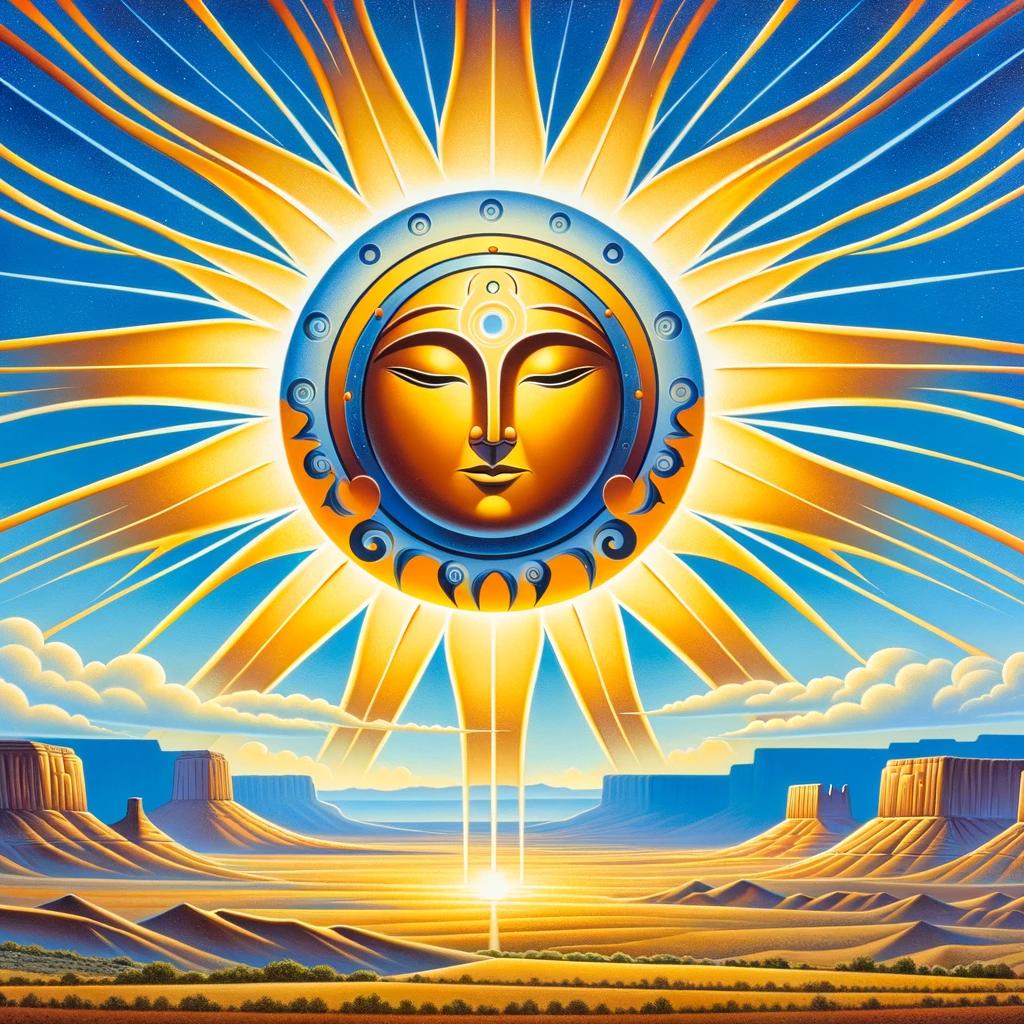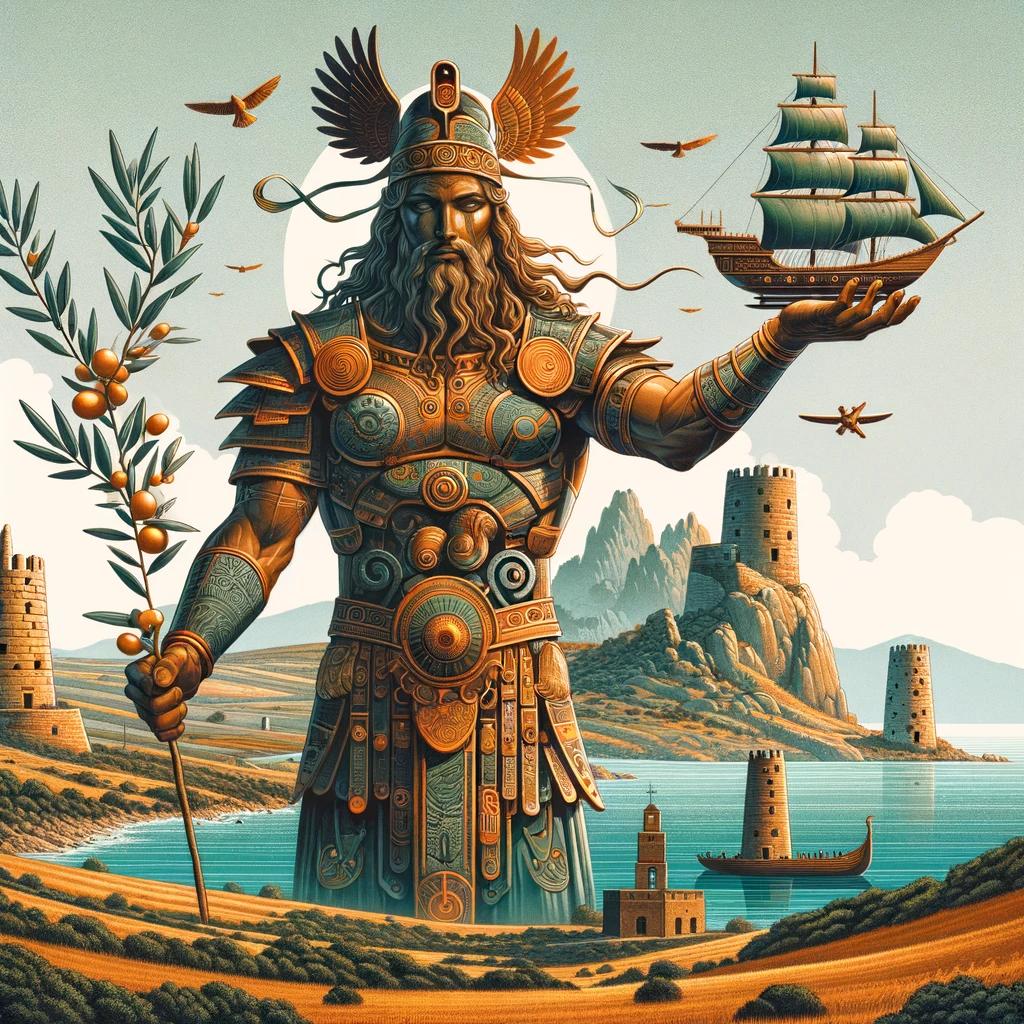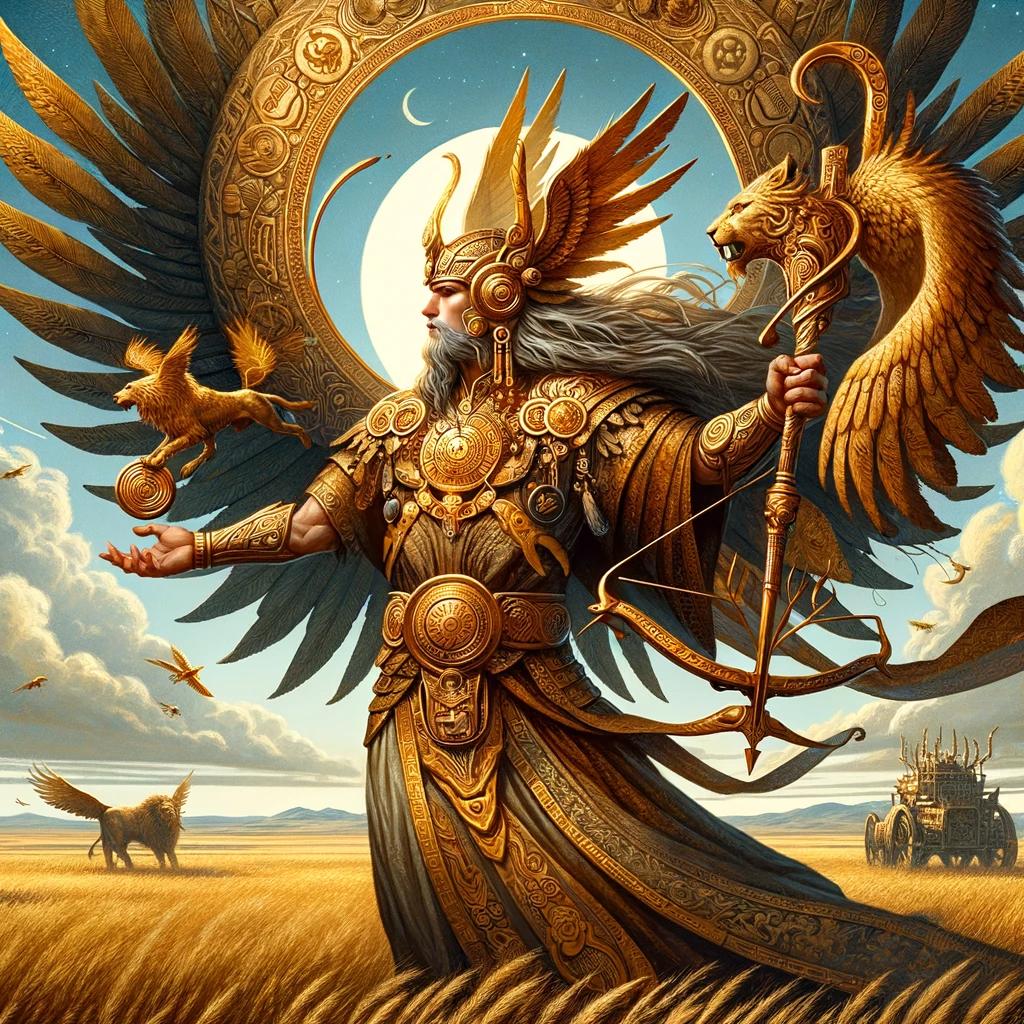Exploring the Divine World: Balinese Mythology Gods and Goddesses Unveiled
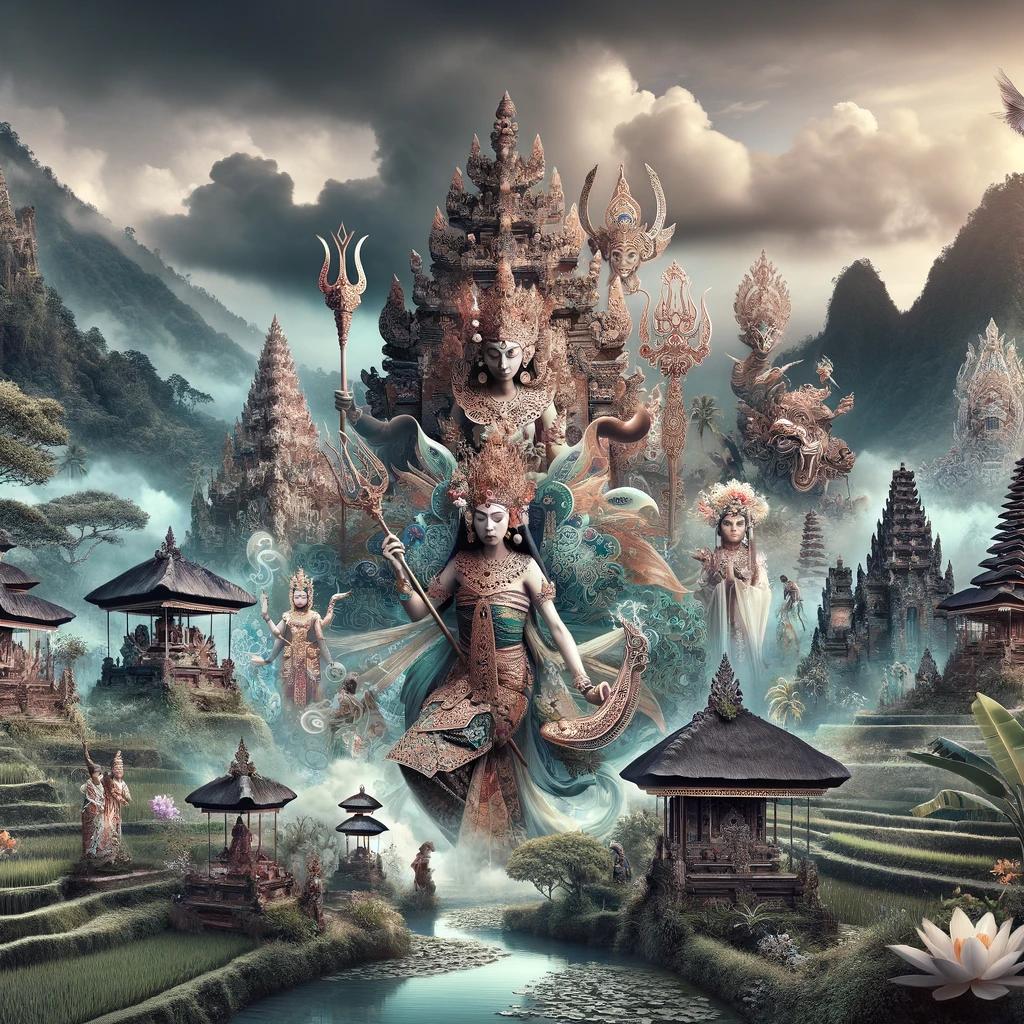
The rich mythology of Bali is filled with gods and goddesses who play significant roles in both religion and culture. From Sanghyang Widhi Wasa, the supreme god, to Brahma, Vishnu, and Shiva, these deities hold specific functions in the Balinese universe.
Other prominent figures include Durga, the protector of cemeteries, Bhoma, the guardian of buildings, Ganesha, the god of wisdom and protection, and Dewi Danu, the goddess of water.
The influence of Balinese mythology can be seen in religious practices, temple worship, and festive celebrations throughout Bali. Enjoy a glimpse into this captivating world of mythical beings and stories.
Understanding the Gods and Goddesses of Balinese Mythology
The world of Balinese mythology is populated by a diverse pantheon of gods and goddesses, each with their own intricate roles and significance.
These divine beings are at the heart of Balinese religious beliefs and cultural practices. Let us delve into the realm of Balinese mythological deities and explore their unique attributes and contributions.
Sanghyang Widhi Wasa: The Supreme God
Sanghyang Widhi Wasa stands as the supreme deity in Balinese mythology. As the creator of all things and elements, Sanghyang Widhi Wasa is revered as the ultimate divine force. This powerful god manifests in different forms, including Brahma, Vishnu, and Shiva.
Brahma, the Creator and Keeper of Knowledge
Brahma holds a significant position in Balinese mythology as the creator and administrator of knowledge and wisdom.
He is venerated for his role in bringing forth intellectual growth and understanding in the universe.
Vishnu, the Protector of Life and Beings
Vishnu assumes the responsibility of safeguarding life and the existence of sentient beings in Balinese mythology. This revered deity is believed to ensure the preservation and well-being of all living creatures.
Shiva, the God of Death and Renewal
Shiva, often associated with death and destruction, plays a vital role in the cycle of creation and renewal. Despite being the lord of destruction, Shiva also holds the power to purify and regenerate, making him an essential deity in Balinese mythology.
Durga, the Protector of Cemeteries
Durga, a manifestation of Parwati, the wife of Shiva, takes on the duty of protecting cemeteries in Balinese mythology. She guards the sacred resting places of the departed and ensures their peaceful passage into the afterlife.
Bhoma, the Guardian of Buildings and Dispeller of Evil
Believed to be the offspring of Mother Earth and Vishnu, Bhoma is revered as the guardian of buildings and the protector against evil forces. His presence can be found in temples and main gateways, symbolizing protection and warding off malevolent energies.
Ganesha, the Elephant-Headed God of Wisdom and Protection
Ganesha, with his distinctive elephant head, is esteemed as the god of wisdom and protection in Balinese mythology. He is revered for his ability to remove obstacles and bring success and prosperity to the lives of the Balinese people.
Dewi Danu, the Goddess of Water, Lakes, and Rivers
Dewi Danu is the goddess associated with water bodies, including lakes and rivers, in Balinese mythology. She is revered for her role in ensuring the abundance and fertility of these essential natural resources.
The Influence of Balinese Mythology on Religion and Culture in Bali
The mythology of Bali holds a significant influence on the religious practices and cultural traditions of the island. Balinese people embrace Hindu Dharma, despite Indonesia’s recognition of only monotheistic religions. This recognition, attributed to Sanghyang Widhi Wasa, acknowledges the importance of Balinese mythology in the religious mosaic of the archipelago.
Recognizing Hindu Dharma in Indonesia
In a country where monotheistic religions dominate, the recognition of Hindu Dharma in Indonesia is a testament to the cultural and religious diversity of Bali. Balinese people have preserved their unique form of Hinduism, infused with ancient indigenous beliefs and rituals that celebrate gods and goddesses.
The Significance of Temples in Balinese Life
Temples are at the heart of Balinese life, acting as sacred sanctuaries and spiritual centers. These architectural wonders are not only places of worship but also serve as meeting points for the community.
Temples harbor intricate carvings and religious icons, providing a tangible connection to Balinese mythology and the divine.
Festivals and Rituals in Honor of Balinese Gods and Goddesses
Bali’s festive atmosphere is enlivened by a myriad of celebrations and rituals that pay homage to the gods and goddesses of Balinese mythology. These vibrant festivities, often accompanied by music, dance, and intricate ceremonies, strengthen the spiritual and cultural fabric of the island.
From Galungan and Kuningan, which celebrates the creation of the universe, to Nyepi Day, a day of self-reflection and purification, these rituals demonstrate the deep-rooted significance of Balinese mythology in daily life.
The Importance of Offerings and Symbolism
Offerings are an integral part of Balinese religious practice, serving as acts of devotion and gratitude to the gods and goddesses. These intricately crafted offerings, known as “canang sari,” are brimming with symbolic elements such as flowers, fruits, and nuts.
The act of making and placing offerings symbolizes the Balinese people’s constant communication and connection with the divine realm, reinforcing the profound influence of mythology in their lives.
Exploring Balinese Mythological Figures and Stories
Embark on a journey through the mesmerizing world of Balinese mythology, where captivating figures and stories come to life.
Discover the profound significance behind these mythical beings and their role in shaping Balinese culture and spirituality.
Nyepi Day: The Day of Silence and Soul Purification
Experience the unique Nyepi Day, a remarkable cultural event where the entire island of Bali comes to a standstill. Learn about the rituals and practices followed during this day of silence, dedicated to introspection, purification, and spiritual rejuvenation.
Galungan and Kuningan: A Ten-Day Religious Celebration
Immerse yourself in the vibrant and joyous atmosphere of Galungan and Kuningan, a momentous ten-day celebration marking the victory of good over evil. Discover the elaborate ceremonies, decorations, and offerings carried out by the Balinese to honor their ancestral spirits and deities.
Saraswati: The Goddess of Wisdom, Art, and Learning
Unveil the divine presence of Saraswati, the goddess associated with wisdom, art, and learning. Delve into the mythology surrounding Saraswati and explore her profound influence on the arts, education, and intellectual pursuits in Balinese society.
The World Turtle and Its Symbolism in Balinese Mythology
Discover the fascinating legend of the World Turtle and its symbolic significance in Balinese mythology. Uncover the deeper meaning behind this mythical creature and its representation of stability, balance, and the foundation of the world.
Dewi Lanjar: The Goddess Associated with Rice Fields
Step into the realm of Dewi Lanjar, the goddess connected with the prosperity and fertility of rice fields. Dive into the stories and rituals dedicated to Dewi Lanjar and gain insight into the important role she plays in Balinese agriculture and sustenance.
Ratih Dewi Sri: The Goddess of Love, Beauty, and Fertility
Explore the enchanting tales of Ratih Dewi Sri, the goddess of love, beauty, and fertility. Uncover the rituals and beliefs surrounding this goddess and witness how her divine presence brings blessings and abundance to the Balinese people.
Batara Kala: The God of Time, Destruction, and Rebirth
Enter the realm of Batara Kala, the formidable god associated with time, destruction, and rebirth. Delve into the complex mythology surrounding this deity and discover the transformative power he embodies in Balinese spirituality.
Balinese Mythology in Art, Literature, and Popular Culture
Exploring the influence of Balinese mythology in various forms of art, literature, and popular culture provides a deeper understanding of its lasting impact and significance. From traditional arts to modern interpretations, the gods and goddesses of Balinese mythology have inspired creativity and captivated audiences across different mediums.
Depictions of Balinese Gods and Goddesses in Traditional Arts
In traditional Balinese arts, such as painting, sculpture, and dance, the gods and goddesses of Balinese mythology are often portrayed with great detail and precision. From the intricate dance movements to the vibrant colors in paintings, these artistic expressions bring the mythical figures to life.
Balinese artists have skillfully captured the essence and symbolism associated with each deity, allowing viewers to appreciate their divine qualities and stories.
Balinese Mythology in Literature and Folklore
Balinese mythology has also found its place in the written word. Traditional Balinese literature and folklore are filled with epic tales, myths, and legends that revolve around the gods and goddesses.
These stories have been passed down through generations, showcasing the enduring power and popularity of Balinese mythology. From heroic tales of gods and their interventions to enchanting love stories, the literature and folklore of Bali take readers on a captivating journey into the world of these mythical beings.
Modern Interpretations and Representations of Balinese Mythology
While traditional art and literature continue to celebrate Balinese mythology, modern interpretations have also emerged in popular culture. Films, music, and contemporary art often draw inspiration from the rich tapestry of Balinese mythology, incorporating its symbolism and themes into modern storytelling.
These adaptations and reimaginings allow a wider audience to engage with the fascinating tales and characters, providing a new perspective on the enduring relevance of Balinese mythology.
In conclusion, Balinese mythology resonates not only in religious and cultural practices but also in various artistic expressions and popular culture.
Whether it be through traditional arts, literature, or modern interpretations, the gods and goddesses of Balinese mythology continue to captivate and inspire people, bridging the gap between the ancient and the contemporary.
.

